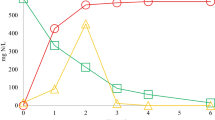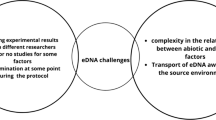Abstract
Black bloom is a worldwide environmental problem. Sediment microbes play important roles in the process of black bloom. The dynamic change of sedimental microbial community and their potential link between taste and odor compounds during black bloom was investigated in an in situ black bloom enclosure simulation experiment. Through high-throughput sequencing and analysis, pronounced shifts of sedimental microbial community were observed on the 3rd and 7th day in the black bloom group. Microbes in Cyanobacteria, Verrucomicrobia, Planctomycetes, and Actinobacteria were obviously increased, while microbes from the phyla OP8, Chloroflexi, and Acidobacteria were decreased significantly. RDA analysis revealed that the concentrations of chlorophyll a (Chla), total phosphorus (TP), and turbidity (NTU) in the water and the TP, TN concentrations in the sediment were the main environmental factors that affect the microbial community in the sediment. Correlation analysis revealed that microbes Dechloromonas sp. (OTU003567 and OTU000093), Desulfococcus sp. (OTU000911), Chromatiaceae (OTU001222), and Methanosaeta sp. (OTU004809) were positively correlated with the taste and odor substances in the sediment, such as dimethyl sulfide (DMS), β-ionone, β-cyclocitral and geosmin. The sedimental microbial community gradually recovered in the late phase of black bloom, indicating the stability and self-recovery ability of the sedimental microbial community during black bloom. Noteworthily, we observed many possible pathogens increased significantly during the black bloom, which alerts us to keep away from contaminated sediment when black bloom occurred.






Similar content being viewed by others
Data Availability
Available in the manuscript
References
Duval B, Ludlam SD (2001) The black water chemocline of meromictic Lower Mystic Lake, Massachusetts, USA. Int Rev Hydrobiol 86(2):165–181. https://doi.org/10.1002/1522-2632(200104)86:2<165::AID-IROH165>3.0.CO;2-Y
Hu CM, Muller-Karger FE, Vargo GA, Neely MB, Johns E (2004) Linkages between coastal runoff and the Florida Keys ecosystem: a study of a dark plume event. Geophys Res Lett 31(15). https://doi.org/10.1029/2004GL020382
Rabalais NN, Turner RE, Wiseman WJ (2002) Gulf of Mexico hypoxia, a.k.a. “the dead zone”. Annu Rev Ecol Syst 33(1):235–263. https://doi.org/10.1146/annurev.ecolsys.33.010802.150513
Dierssen HM, Kudela RM, Ryan JP, Zimmerman RC (2006) Red and black tides: quantitative analysis of water-leaving radiance and perceived color for phytoplankton, colored dissolved organic matter, and suspended sediments. Limnol Oceanogr 51(6):2646–2659. https://doi.org/10.4319/lo.2006.51.6.2646
Frazier PS, Page KJ (2000) Water body detection and delineation with Landsat TM data. Photogramm Eng Remote Sens 66(12):1461–1468
Pucciarelli S, Buonanno F, Pellegrini G, Pozzi S, Ballarini P, Miceli C (2008) Biomonitoring of Lake Garda: identification of ciliate species and symbiotic algae responsible for the “black-spot” bloom during the summer of 2004. Environ Res 107(2):194–200. https://doi.org/10.1016/j.envres.2008.02.001
Berthon JF, Zibordi G (2010) Optically black waters in the northern Baltic Sea. Geophys Res Lett 37(9). https://doi.org/10.1029/2010GL043227
Sugiura N, Nakano K (2000) Causative microorganisms for musty odor occurrence in the eutrophic Lake Kasumigaura. Hydrobiologia 434(1–3):145–150. https://doi.org/10.1023/A:1004000511610
Bai Y, He XQ, Pan DL, Zhu QK, Gong F (2009) The black water around the Changjiang (Yangtze) Estuary in the spring of 2003. Acta Oceanol Sin 28(4):23–31
Wang L, Wang YL, Cheng HM, Cheng JL (2019) Identifying the driving factors of black bloom in Lake Bay through Bayesian LASSO. Int J Environ Res Public Health 16(14). https://doi.org/10.3390/ijerph16142492
Wang YL, Wang L, Hua ZL, Ding SM (2016) The relationships of velocity, dissolved oxygen with Fe2+,S2− in black bloom region on Nanfei River estuary of Lake Chaohu. J Lake Sci 28(4):710–717
Yang M, Yu JW, Li ZL, Guo ZH, Burch M, Lin TF (2008) Taihu Lake not to blame for Wuxi’s woes. Science 319(5860):158–158. https://doi.org/10.1126/science.319.5860.158a
Lu GH, Ma Q (2010) Monitoring and analysis on “black water aggregation” in Lake Taihu, 2009. J Lake Sci 22(4):481–487
Duan HT, Ma RH, Loiselle SA, Shen QS, Yin HB, Zhang Y (2014) Optical characterization of black water blooms in eutrophic waters. Sci Total Environ 482-483:174–183. https://doi.org/10.1016/j.scitotenv.2014.02.113
Yu DZ, Xie P, Zeng C, Xie LJ, Chen J (2016) In situ enclosure experiments on the occurrence, development and decline of black bloom and the dynamics of its associated taste and odor compounds. Ecol Eng 87:246–253. https://doi.org/10.1016/j.ecoleng.2015.11.039
Zhang YL, Shi K, Liu JJ, Deng JM, Qin BQ, Zhu GW, Zhou YQ (2016) Meteorological and hydrological conditions driving the formation and disappearance of black blooms, an ecological disaster phenomena of eutrophication and algal blooms. Sci Total Environ 569-570:1517–1529. https://doi.org/10.1016/j.scitotenv.2016.06.244
Feng ZY, Fan CX, Huang WY, Ding SM (2014) Microorganisms and typical organic matter responsible for lacustrine “black bloom”. Sci Total Environ 470-471:1–8. https://doi.org/10.1016/j.scitotenv.2013.09.022
Shen QS, Liu C, Zhou QL, Shang JG, Zhang L, Fan CX (2013) Effects of physical and chemical characteristics of surface sediments in the formation of shallow lake algae-induced black bloom. J Environ Sci 25(12):2353–2360. https://doi.org/10.1016/S1001-0742(12)60325-8
Obi CC, Adebusoye SA, Ugoji EO, Ilori MO, Amund OO, Hickey WJ (2016) Microbial communities in sediments of Lagos Lagoon, Nigeria: elucidation of community structure and potential impacts of contamination by municipal and industrial wastes. Front Microbiol 7:1213. https://doi.org/10.3389/fmicb.2016.01213
Del Giorgio PA, Williams PJB (2005) Respiration in aquatic ecosystems. Oxford University Press, USA
Yin HB, Wu YC (2016) Factors affecting the production of volatile organic sulfur compounds (VOSCs) from algal-induced black water blooms in eutrophic Freshwater Lakes. Water, Air, Soil Pollut 227(9). https://doi.org/10.1007/s11270-016-3061-2
Diaz RJ, Rosenberg R (2008) Spreading dead zones and consequences for marine ecosystems. Science 321(5891):926–929. https://doi.org/10.1126/science.1156401
He W, Shang JG, Lu X, Fan CX (2013) Effects of sludge dredging on the prevention and control of algae-caused black bloom in Taihu Lake, China. J Environ Sci 25(3):430–440. https://doi.org/10.1016/S1001-0742(12)60098-9
Chen C, Zhong JC, Yu JH, Shen QS, Fan CX, Kong FX (2016) Optimum dredging time for inhibition and prevention of algae-induced black blooms in Lake Taihu, China. Environ Sci Pollut Res 23(14):14636–14645. https://doi.org/10.1007/s11356-016-6627-z
Zhang JX, Yang YY, Zhao L, Li YZ, Xie SG, Liu Y (2015) Distribution of sediment bacterial and archaeal communities in plateau freshwater lakes. Appl Microbiol Biotechnol 99(7):3291–3302. https://doi.org/10.1007/s00253-014-6262-x
Lomans BP, Van der Drift C, Pol A, Op den Camp HJM (2002) Microbial cycling of volatile organic sulfur compounds. Cell Mol Life Sci 59(4):575–588. https://doi.org/10.1007/s00018-002-8450-6
Deng XW, Chen J, Hansson LA, Zhao X, Xie P (2020) Eco-chemical mechanisms govern phytoplankton emissions of dimethylsulfide in global surface waters. Natl Sci Rev. https://doi.org/10.1093/nsr/nwaa140
Fan XF, Xing P (2016) The vertical distribution of sediment archaeal community in the “black bloom” disturbing Zhushan Bay of Lake Taihu. Archaea 2016:8232135. https://doi.org/10.1155/2016/8232135
Qin BQ, Zhu GW, Gao G, Zhang YL, Li W, Paerl HW, Carmichael WW (2010) A drinking water crisis in Lake Taihu, China: linkage to climatic variability and lake management. Environ Manag 45(1):105–112. https://doi.org/10.1007/s00267-009-9393-6
Guo L (2007) Ecology. Doing battle with the green monster of Taihu Lake. Science 317(5842):1166. https://doi.org/10.1126/science.317.5842.1166
Liu GF, He J, Fan CX, Zhang L, Shen QS, Zhong JC, Yan SH (2010) Environment effects of algae-caused black spots: impacts on Fe-Mn-S cycles in water-sediment interface. Huan Jing Ke Xue 31(11):2652–2660
Deng XW, Xie P, Qi M, Liang GD, Chen J, Ma ZM, Jiang Y (2012) Microwave-assisted purge-and-trap extraction device coupled with gas chromatography and mass spectrometry for the determination of five predominant odors in sediment, fish tissues, and algal cells. J Chromatogr A 1219:75–82. https://doi.org/10.1016/j.chroma.2011.11.031
Jing HM, Xia XM, Suzuki K, Liu HB (2013) Vertical profiles of bacteria in the tropical and subarctic oceans revealed by pyrosequencing. PLoS One 8(11):e79423. https://doi.org/10.1371/journal.pone.0079423
Lijuan X (2015) Character of the microbial composition of 'black bloom' water body. Dissertation, University of Chinese Academy of Science
Shen QS, Fan CX, Liu C, Chen C (2018) The limiting factor to the outbreak of lake black bloom: roles of ferrous iron and sulfide ions. CLEAN-Soil Air Water 46(9). https://doi.org/10.1002/clen.201800305
Xing P, Hu WT, Wu YF, Wu QL (2015) Major progress in microbial ecology of hypoxia in the shallow eutrophic lakes. J Lake Sci 27(4):567–574
Zhou YL, Jiang HL, Cai HY (2015) To prevent the occurrence of black water agglomerate through delaying decomposition of cyanobacterial bloom biomass by sediment microbial fuel cell. J Hazard Mater 287:7–15. https://doi.org/10.1016/j.jhazmat.2015.01.036
Duarte ICS, Oliveira LL, Saavedra NK, Fantinatti-Garboggini F, Menezes C, Oliveira VM, Varesche M (2010) Treatment of linear alkylbenzene sulfonate in a horizontal anaerobic immobilized biomass reactor. Bioresour Technol 101(2):606–612. https://doi.org/10.1016/j.biortech.2008.10.065
Ohshiro T, Harada N, Kobayashi Y, Miki Y, Kawamoto H (2012) Microbial fucoidan degradation by Luteolibacter algae H18 with Deacetylation. J Agric Chem Soc Jpn 76(3):620–623. https://doi.org/10.1271/bbb.110911
Giovannoni JS, Tripp HJ, Givan S et al (2005) Genome streamlining in a cosmopolitan oceanic bacterium. Science 309(5738):1242–1245. https://doi.org/10.1126/science.1114057
Farooq A, Francesca M (2007) Microbial structuring of marine ecosystems. Nat Rev Microbiol 5(10):782–791. https://doi.org/10.1038/nrmicro1798
Buchan A, Lecleir GR, Gulvik CA, González JM (2014) Master recyclers: features and functions of bacteria associated with phytoplankton blooms. Nat Rev Microbiol 12(10):686–698. https://doi.org/10.1038/nrmicro3326
Ivars-Martinez E, Martin-Cuadrado AB, D'Auria G, Mira A, Ferriera S (2008) Comparative genomics of two ecotypes of the marine planktonic copiotroph Alteromonas macleodii suggests alternative lifestyles associated with different kinds of particulate organic matter. ISME J 2:1194–1212. https://doi.org/10.1038/ismej.2008.74
Teeling H, Fuchs BM, Bennke CM, Krüger K, Chafee M, Kappelmann L, Reintjes G, Waldmann J, Quast C, Fo G (2016) Recurring patterns in bacterioplankton dynamics during coastal spring algae blooms. Elife 5:e11888. https://doi.org/10.7554/eLife.11888
Teeling H, Fuchs BM, Becher D, Klockow C, Gardebrecht A, Bennke CM, Kassabgy M, Huang S, Mann AJ, Waldmann J (2012) Substrate-controlled succession of marine Bacterioplankton populations induced by a phytoplankton bloom. Science 336(6081):608–611. https://doi.org/10.1126/science.1218344
Cavanaugh CMMZP, Newton ILG, Stewart FJ (2005) The prokaryotes. Springer-Verlag New York Inc, New York. https://doi.org/10.1007/978-1-4757-2191-1
Nriagu JO, Holdway DA (1989) Production and release of dimethyl sulfide from the Great Lakes. Tellus 41B(2):161–169. https://doi.org/10.1111/j.1600-0889.1989.tb00133.x
Acknowledgments
This study was jointly supported by the National Natural Science Foundation of China (31901081), the National Key Research and Development Program of China (2017YFA0605201), the Science and Technology Service Network Initiative of the Chinese Academy of Sciences (KFJ-STS-QYZD-099), and the Featured Institute Service Projects from the Institute of Hydrobiology, the Chinese Academy of Sciences (Y85Z061601).
Code Availability
Available in the manuscript
Funding
This study was jointly supported by the National Natural Science Foundation of China (31901081), the National Key Research and Development Program of China (2017YFA0605201), the Science and Technology Service Network Initiative of the Chinese Academy of Sciences (KFJ-STS-QYZD-099), and the Featured Institute Service Projects from the Institute of Hydrobiology, the Chinese Academy of Sciences (Y85Z061601).
Author information
Authors and Affiliations
Contributions
Not applicable
Corresponding author
Ethics declarations
Conflict of Interest
The authors declare that they have no conflict of interest.
Electronic Supplementary Material
ESM 1
(DOCX 628 kb)
Rights and permissions
About this article
Cite this article
Chen, J., Xie, P., Yu, D. et al. Dynamic Change of Sedimental Microbial Community During Black Bloom—an In Situ Enclosure Simulation Study. Microb Ecol 81, 304–313 (2021). https://doi.org/10.1007/s00248-020-01561-2
Received:
Accepted:
Published:
Issue Date:
DOI: https://doi.org/10.1007/s00248-020-01561-2




